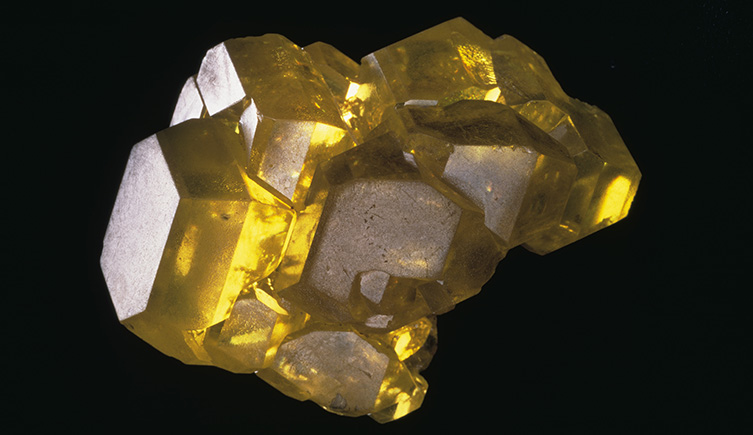For generations, scientists have been scouring our galaxy for evidence of life on other planets. They’re searching for a specific set of circumstances and chemicals to come together in the right place, at the right time

Jupiter's icy moon Europa is thought to have a liquid ocean under its crust, where it could harbour life. © NASA/JPL-Caltech/SETI Institute
By studying how humans, plants, animals and microbes survive and thrive on Earth, scientists have identified key ingredients that appear to be essential for life to evolve.
Our scientists Dr Anne Jungblut, a specialist on life in extreme conditions, and Dr Paul Kenrick, who specialises in the early evolution of life, explain the vital ingredients that they are looking for.
1. Water

Water functions as a solvent, which allows key chemical reactions to take place. © Triff/ Shutterstock
Almost all the processes that make up life on Earth can be broken down into chemical reactions. Most of those reactions require a liquid to break down substances so they can move and interact freely.
Liquid water is an essential requirement for life on Earth because it functions as a solvent. It’s capable of dissolving substances and enabling key chemical reactions in animal, plant and microbial cells.
The chemical and physical properties of water allow it to dissolve more substances than most other liquids. Other characteristics that make water a good habitat for life are its heat conduction, surface tension, high boiling and melting points and its ability to let light penetrate it.
“As water plays such an essential role in life on Earth, the presence of water has been vital in the search of other habitable planets and moons,” says Anne.
2. Carbon

Diamonds are an allotrope – a structural form of carbon.
Many complex molecules are needed to perform the thousands of functions that sustain complex life. Carbon is the simple building block that organisms need to form organic compounds such as proteins, carbohydrates and fats.
The molecular structure of carbon allows its atoms to form long chains, with each link leaving two potential bonds free to join with other atoms. It bonds particularly easily with oxygen, hydrogen and nitrogen.
The free bonds can even join with other carbon atoms to form complex 3D molecular structures, such as rings and branching trees. Carbon molecules are also strong and stable, so they’re perfect to build a body with.
“Carbon is one of the most abundant chemical elements on Earth and a major part of all living organisms,” says Anne. “Therefore, one working hypothesis is that life on other planets might also be carbon-based.”
3. Nitrogen

Nitrogen is needed to make DNA. Liquid nitrogen can also maintain temperatures far below the freezing point of water. © Vit Kovalcik/ Shutterstock
Carbon is a fundamental component of organic compounds, but it can’t do it alone. The complex proteins required for life are built up from smaller compounds called amino acids – simple organic compounds that contain nitrogen.
Nitrogen is also needed to make DNA and RNA – the carriers of the genetic code for life on Earth. Many bacteria can convert nitrogen from the atmosphere into a form that is used in living cells.
“Plants can’t use atmospheric nitrogen. They rely on ammonium and nitrate created by bacteria in the soil and water, and animals obtain it through their food,” explains Anne.
“Finding biochemically usable nitrogen could be a big clue for biological activity on another planet.”
4. Phosphorus

Phosphorus is a vital element in cell membranes. © Magnetix/ Shutterstock
Phosphorus is a key component of adenosine triphosphate, or ATP – an organic substance that acts as life’s molecular unit of currency.
ATP transports chemical energy around the body’s cells, powering nearly every cellular process that requires energy.
Phosphorus is a vital element in cell membranes – the layer surrounding the inside of cells that controls the movement of substances in and out. Like nitrogen, phosphorus is necessary to create DNA and RNA.
“The phosphate group acts like glue in DNA, so the bodies of living organisms wouldn’t work without it,” says Anne.
5. Sulphur

A crystal specimen of sulphur from the Museum collections. Sulphur can be very sensitive to changes in temperature and humidity. Find out how we clean and maintain mineral specimens.
Sulphur is part of most biochemical processes on Earth and most enzymes can’t function without it. It’s also a component of many vitamins and hormones.
In the absence of light and oxygen, it’s possible to use sulphur as an energy source. Bacteria that live under severe environmental conditions are called extremophiles and have been found to gain their energy for growth from sulphur and hydrogen alone.
Anne says, “Some micro-organisms are able to grow under extreme conditions such as permanently frozen lakes, deep-sea hydrothermal vents, high radioactive radiation and hypersalinity.”
“They expand our understanding of the capability of some life forms to resist extreme stress. This helps us to understand how habitable other planets might be.”
6. Luck

Earth has been a lucky planet, with all the ingredients of life coming together simultaneously. © Vadim Sadovski/ Shutterstock
Having all the right chemicals on the same planet seems fortunate. Earth is a tiny planet in the middle of an enormous universe